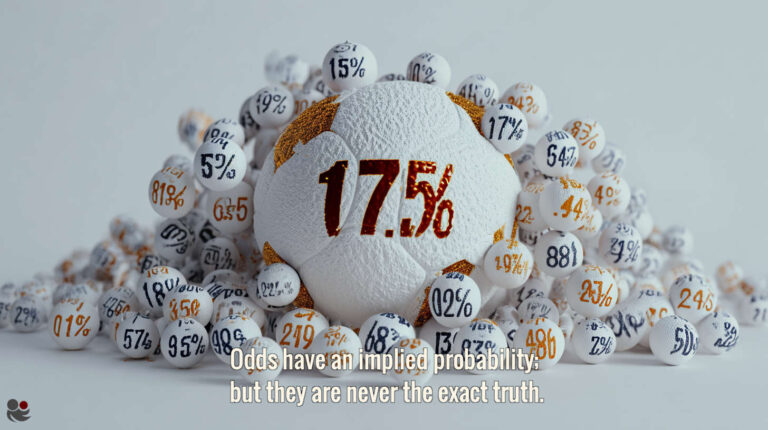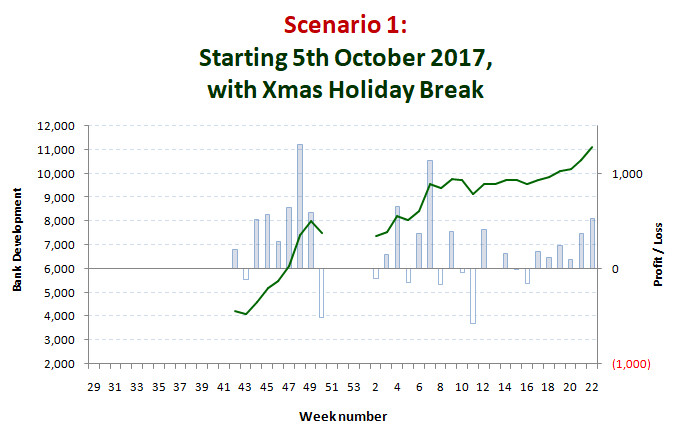
Gambling ‘in play’ provides the opportunity of trading or hedging via betting exchange sites such as Betfair, Betdaq or Smarkets, where this type of strategy is known as greening-up (i.e. two or more transactions performed to produce a ‘green screen’ where all the results are coloured green and represent guaranteed profit).
At best, ‘greening-up’ is a means of making a profit whatever the outcome of the match or, the same method can be used to cut losses should the match not pan out as hoped.
 Image: nulinukas (Shutterstock)
Image: nulinukas (Shutterstock)Greening-Up In-Play Example
Chelsea are playing a home league fixture against Aston Villa and their odds to win the game settle in a betting exchange at 1.29 just before kick-off. They are heavy favourites at home to beat Villa, who have been on a bad run of results due to many squad injuries and a new manager settling in, although many of their injured players are returning to full match fitness at the time of this fixture.
Backing Chelsea in an exchange with 100 units at this price would see a profit of just 29 units (gross of commission) if they win or, a total loss of the 100 unit stake if they lose or draw. From a purely numerical perspective, the chance of winning the bet on the home win is one in three.
Chelsea’s form has been disastrous in their previous six or seven games but, playing at home, they are traditionally difficult to beat…
Laying Chelsea (effectively backing them not to win) means backing two of the three total outcomes (laying the home team means backing the draw and the away win), which is exactly the same principle as a bookmaker’s ‘double chance’ bet.
With a lay bet the liability (risk) is reversed and on the basis of the same 100 units stake and 1.29 odds the risk (loss) is just 29 units should Chelsea win the match; of course, the possible profit from laying Chelsea is now the stake of 100 units (gross of commission) should they draw or lose. Before the game kicks off, Aston Villa’s price to win the match reaches 14.5, with the draw at 6.2.
Okay, choosing Chelsea’s dominance in home fixtures, we are seeking to back them to win the match with a stake of 100 units. Not so many games have a goal in the first few minutes and usually the price rises a little as each minute ticks by. Waiting five minutes before placing a bet of this nature is always a good strategy and by the time we place the bet Chelsea’s price to win has risen three points from 1.29 to 1.32.
Shortly afterwards, Chelsea score. Just twelve minutes are on the clock but now is the time to think about hedging the bet.
With a goal already in the bag, Chelsea’s price is now at a very thin 1.16 to win the match but, there is still a large portion of it left to be played. As their price to win has dropped by 50%, this is an ideal situation to ‘lay’ them not to win for instant guaranteed profit from this event.
Using a lay stake of 115 units at a lay price of 1.16, the potential win is obviously 115 units (gross of commission). The 100 unit stake is at risk from the first bet which promises 29 units (gross) should it win. Ideally, the lay bet stake should be calculated to recover the back bet stake plus half of the potential back bet winnings so that the same amount is won regardless of whether the match finishes in a home win (back bet) or draw or away win (lay bet).
Thus, the lay bet stake of 115 units recovers the 100 unit back bet stake plus 15 units on top of that (roughly half of the 29 units that could be won if Chelsea hold on for victory)…







